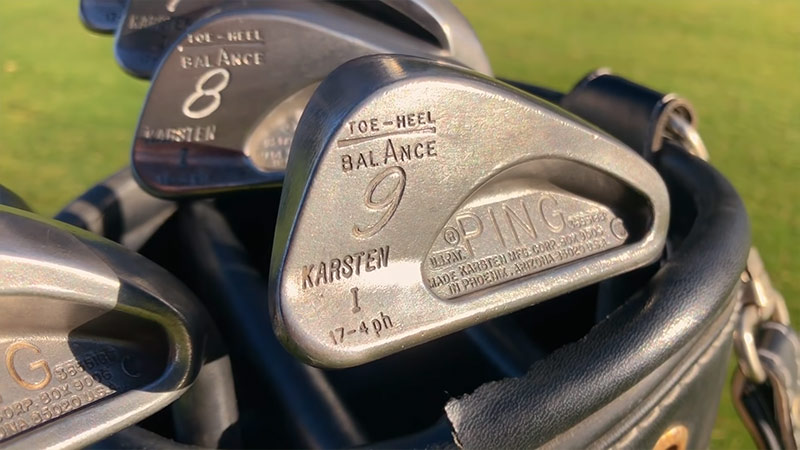In the realm of sports artifacts, old golf clubs often transcend their utilitarian origins to become cherished collectibles.
The question of whether these relics are worth anything opens a door to a nuanced exploration. Beyond their functional history, vintage golf clubs can embody the elegance of a bygone era and connect enthusiasts to the sport’s rich heritage.
The worth of these clubs hinges on factors like historical significance, brand recognition, rarity, condition, and evolving market trends.
Unraveling the stories held within these aged clubs unveils a fascinating journey, where each club possesses the potential to be a tangible link to the timeless allure of golf.
Are Old Golf Clubs Worth Anything?
Yes, old golf clubs can indeed be worth something, and their value depends on various factors.
Here are some reasons why old golf clubs might have value:
Historical Significance
Old golf clubs that carry historical weight can be valuable artifacts. Clubs associated with legendary golfers, such as Bobby Jones or Jack Nicklaus, often hold a special place in the hearts of collectors.
Additionally, clubs used in significant tournaments or championships, like the Masters or the Open Championship, can command higher prices due to their connection to pivotal moments in golf history.
Brand Recognition
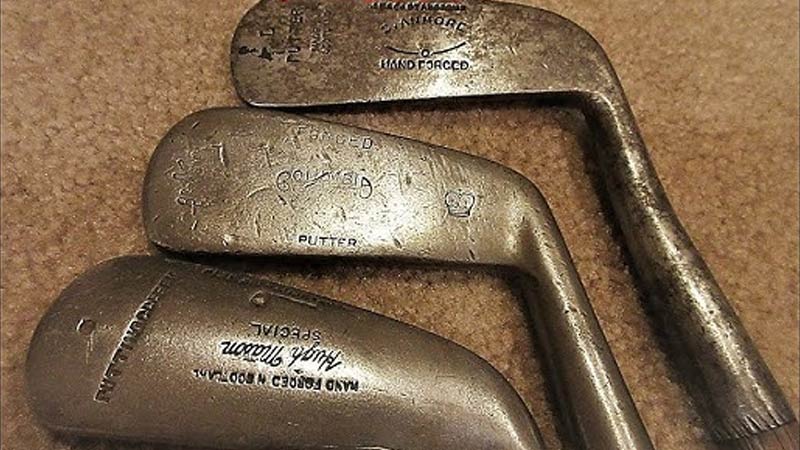
The reputation of the manufacturer plays a pivotal role in determining the worth of old golf clubs.
Clubs produced by well-known and esteemed brands such as Ping, Titleist, or Callaway are often more valuable.
Vintage clubs from these manufacturers are sought after by collectors who appreciate the craftsmanship and legacy associated with these brands.
Rare or Limited Editions
The scarcity of a particular golf club can significantly impact its value. Limited edition or rare clubs, those produced in small quantities or featuring unique designs, are particularly sought after.
Collectors are often drawn to the exclusivity and distinctiveness offered by these clubs, willing to pay a premium to add such pieces to their collections.
Condition
The condition of an old golf club is a crucial factor in determining its value. Well-preserved clubs with minimal signs of wear, original grips, and intact markings are generally more valuable.
Collectors often prioritize items that have been maintained in their original state, with any restoration work potentially diminishing the club’s market value.
Collectibility
Certain collectors focus on specific niches within the realm of golf clubs. This could include a preference for putters, wooden clubs, or those from a particular era.
Clubs associated with niche categories, such as vintage women’s clubs or those with rare club head designs, may have increased collectible appeal, driving up their value among enthusiasts.
Age
The age of a golf club can contribute to its appeal. Clubs from the late 19th and early 20th centuries, known as hickory-shafted clubs, are highly sought after by collectors for their historical significance.
Older clubs that showcase the evolution of golf club technology, materials, and design can be of interest to those looking to build comprehensive collections that span different eras.
Provenance
Establishing the provenance of a golf club, meaning its documented history and ownership can significantly enhance its value.
Clubs with a known history, such as those used by famous players or in notable events, are often considered more valuable.
Certificates of authenticity, letters from previous owners, or photographs of the club in action can contribute to establishing provenance.
Market Trends
The value of old golf clubs is not static and can be influenced by current market trends. Certain periods, styles, or types of clubs may experience increased popularity among collectors, leading to fluctuations in market prices.
Staying informed about these trends can help sellers gauge the potential value of their antique golf clubs in the current market landscape.
How Do You Find the Value of Your Old Golf Clubs?
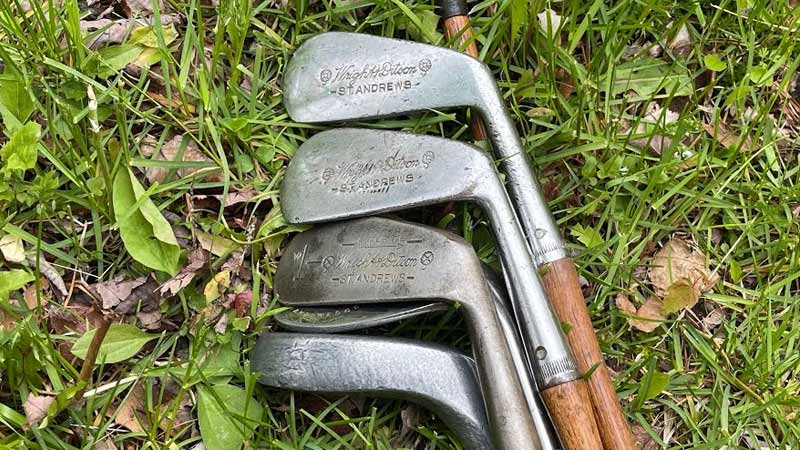
Determining the value of your old golf clubs involves a combination of research, assessment, and market awareness.
Here’s a step-by-step guide on how to find the value of your old golf clubs:
Research Online
When researching online, explore various platforms to get a comprehensive understanding of the market.
Pay attention not only to the asking prices but also to the actual selling prices of similar clubs.
This will give you a more realistic idea of what buyers are willing to pay. Look for completed or sold listings to gauge the true market value.
Consider Brand and Model
Different golf club brands and models have distinct reputations and popularity levels. Well-known brands like Titleist, Callaway, or TaylorMade often have a broader appeal, while certain models may be sought after for their performance or collectible value.
Identify the specific model and brand of your clubs to accurately assess their market value.
Assess Condition
Take a meticulous look at the condition of each club in your set. Check for signs of wear on the grips, scratches on the clubheads, and any damage to the shafts.
The closer your clubs are to “like-new” condition, the more valuable they become. Providing clear and honest visuals through detailed photographs will enhance potential buyers’ confidence in the condition you’re describing.
Check for Customizations
Customizations can add a personal touch to golf clubs, making them more appealing to certain buyers. However, keep in mind that extreme customizations might limit your target audience.
Highlight any custom features and consider whether they enhance or diminish the overall value in the eyes of potential buyers.
Determine Age and Technology
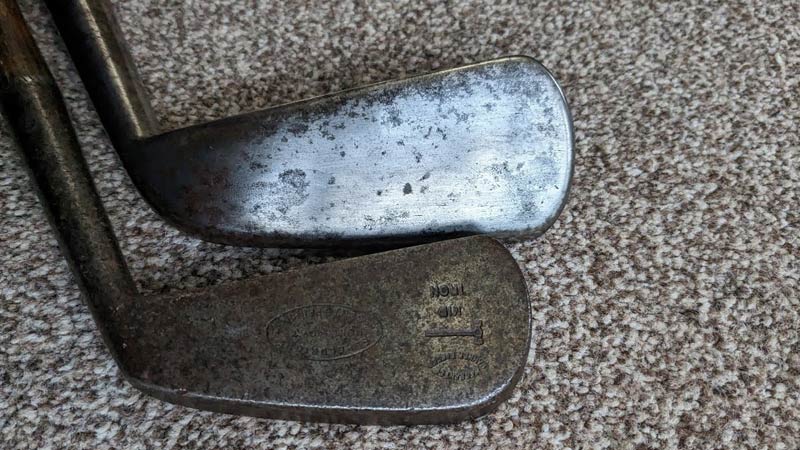
Knowing the manufacturing year of your clubs helps potential buyers gauge their relative “newness.” If your clubs incorporate the latest golfing technology, such as adjustable weights or advanced materials, this can positively influence their value.
Conversely, classic models with a timeless appeal may still hold value among collectors.
Consult Golf Shops or Professionals
Local golf professionals and shops often have their pulse on the local market. They may offer insights into what types of clubs are in demand or provide advice on setting a competitive price.
Building relationships with these experts can be valuable, especially if you plan to buy or sell golf equipment regularly.
Check the Original Purchase Receipt
Having the original purchase receipt can serve as a reference point for both you and potential buyers. It provides transparency and assurance regarding the initial cost of the clubs.
Buyers might feel more confident knowing the history of the clubs and that they were purchased from a reputable source.
Factor in Accessories and Original Packaging
Including original accessories and packaging can enhance the perceived value of your clubs. Headcovers, adjustment tools, and original packaging contribute to the overall presentation and may make your listing more attractive to buyers.
Adjust Pricing Based on Demand
Keep an eye on market trends and demand for specific brands or models. If a particular set of clubs is gaining popularity, you might be able to set a slightly higher price. Conversely, adjust your pricing strategy if certain clubs are losing appeal in the market.
Set a Competitive Price
After considering all these factors, set a competitive and realistic price for your old golf clubs.
A well-researched and fairly priced listing is more likely to attract potential buyers and facilitate a smoother selling process.
Regularly reassess your pricing based on market changes and feedback from potential buyers.
What Are Used Golf Clubs Worth?
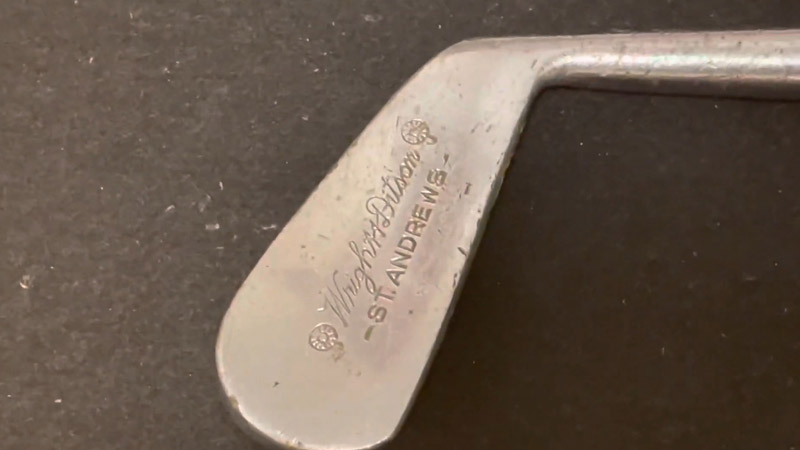
The value of used golf clubs depends on factors like brand, model, condition, and additional features.
Researching the market, accurately assessing your clubs, and considering buyer preferences will help you set a competitive and reasonable price for your specific set of golf clubs.
Used golf club values can range widely such as:
Low-End Clubs
For those on a budget or just starting, low-end golf club sets from lesser-known brands or older models typically range between $50 to $150 for a full set.
While they may lack the latest technology, they provide a cost-effective entry into the world of golf.
Mid-Range Clubs
Mid-range clubs often come from reputable brands and are a few years old. Priced between $200 to $500 or more, these clubs strike a balance between performance and affordability.
This category is ideal for average to experienced golfers seeking quality without a hefty price tag.
High-End Clubs
High-end clubs encompass premium brands and recent models with advanced features. With prices ranging from $500 to well over $1,000, these clubs are favored by avid golfers seeking cutting-edge technology and top-notch performance.
Individual Clubs
Certain clubs, like drivers or putters, may have unique pricing dynamics. Premium drivers with adjustable features or specialty putters with advanced designs can vary widely in price, attracting buyers looking to upgrade specific components of their set.
Condition
The condition of your clubs plays a pivotal role in determining their value. Clubs in excellent condition, with minimal signs of wear and tear, generally command higher prices.
Well-maintained grips, clean clubheads, and straight, undamaged shafts contribute to the overall appeal and may be priced at the higher end of their respective categories.
Additional Considerations
Accessories and packaging can influence the overall value of your clubs. The inclusion of original accessories, such as headcovers and adjustment tools, can add appeal, while the presence of original packaging may enhance the perceived value, attracting buyers looking for a complete set.
Vintage Golf Clubs Worth Money
Vintage golf clubs can indeed be worth money, and their value often depends on factors such as brand, model, age, condition, and rarity.
Here are some insights into what makes vintage golf clubs valuable:
Brand and Model
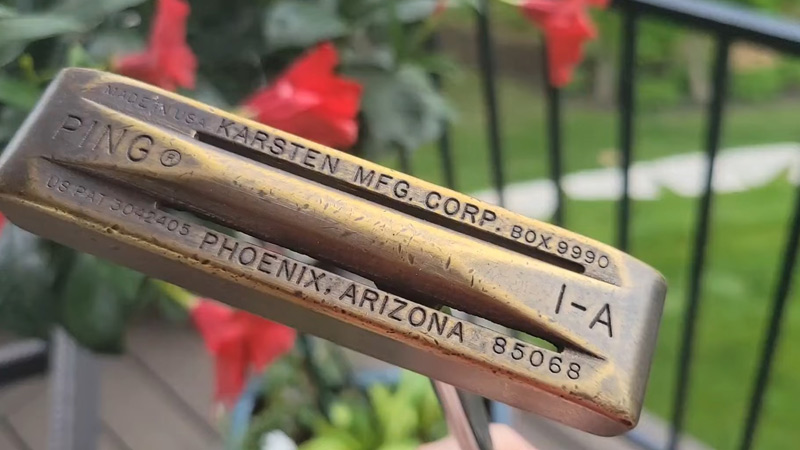
Clubs from well-known and prestigious brands tend to hold or increase in value over time. Classic models from iconic manufacturers like Ping, Titleist, or Callaway can be particularly sought after by collectors.
Rarity
Limited production or rare editions can significantly increase the value of vintage golf clubs. If a specific set or model is scarce or hard to find, collectors may be willing to pay a premium for it.
Condition
The condition of vintage clubs is crucial. Well-preserved clubs with minimal wear and tear, intact grips, and clean clubheads often command higher prices. Clubs in their original condition, without significant alterations, are generally more valuable.
Age
Older golf clubs, especially those from the early to mid-20th century, can be considered vintage and may have increased value due to their historical significance.
However, age alone doesn’t guarantee value; other factors like brand and condition still play a crucial role.
Collectibility
Some vintage golf clubs gain value due to their collectible nature. This could be because they were used by famous golfers, featured innovative designs for their time, or represent a particular era in golf history.
Wooden Shaft Clubs
Vintage clubs with wooden shafts, commonly used before the widespread adoption of steel shafts, can be especially valuable.
These clubs are often associated with a classic and nostalgic feel, appealing to collectors and enthusiasts.
Classic Putter Designs
Classic putters with unique and iconic designs, such as the Bullseye putter, can be highly sought after by collectors and vintage golf enthusiasts.
Provenance
If you can establish the provenance of your vintage clubs, such as having documentation or a known history of ownership, it can add to their appeal and value.
Original Packaging and Accessories
Vintage clubs with their original packaging, headcovers, and other accessories are often more valuable. The completeness of the set can enhance the collector’s experience.
Market Demand
Like any collectible item, the market demand for vintage golf clubs can fluctuate. Keep an eye on trends in the golf collectibles market to gauge the current demand for specific types of vintage clubs.
Some Rare Golf Clubs
Rare golf clubs are highly sought after by collectors and enthusiasts, often due to limited production, historical significance, unique designs, or association with legendary golfers.
Here are a few examples of rare golf clubs:
Hickory Shaft Clubs
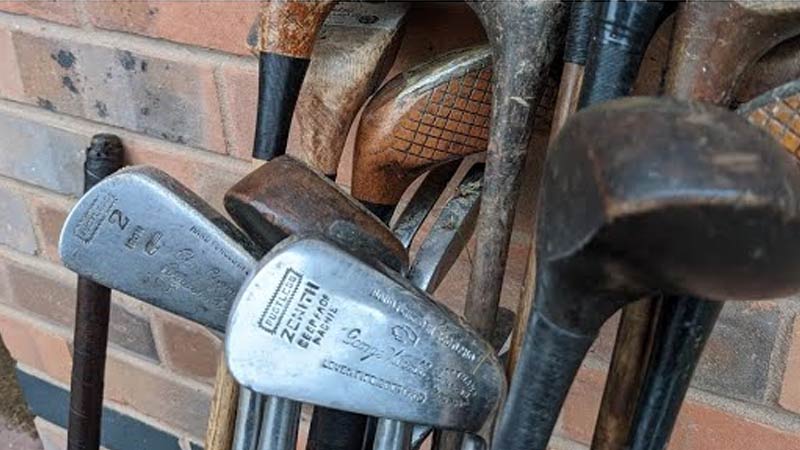
Clubs with hickory shafts were popular in the early to mid-20th century before steel shafts became widespread.
Vintage hickory shaft clubs are now considered rare and are often prized for their historical significance.
Scotty Cameron Putters
Scotty Cameron putters, known for their precision and craftsmanship, have produced limited edition and custom models.
Some of these rare putters, featuring unique designs and materials, can become highly sought after by collectors.
Antique Persimmon Wood Drivers
Early drivers made from persimmon wood, particularly those produced by renowned clubmakers like Tad Moore or MacGregor, are considered rare and collectible. These clubs harken back to a classic era in golf design.
MacGregor VIP Irons
The MacGregor VIP irons, produced in the 1960s and 1970s, are highly coveted for their sleek design and association with legendary golfers like Jack Nicklaus. Finding a well-preserved set of these irons can be a rare and valuable discovery.
Ping Anser Putter – Original 1966 Model
The original Ping Anser putter, created by Karsten Solheim in 1966, revolutionized putter design. The earliest models are rare and hold significant historical importance in the evolution of putter technology.
Bobby Jones Calamity Jane Putter
The Calamity Jane putter was famously used by Bobby Jones during his Grand Slam in 1930. Any original or replica models associated with this historic achievement are considered rare and valuable.
Square Groove Irons
Square groove irons, produced before the USGA banned them in 2010, are now considered rare. Some golfers and collectors seek out these clubs for their unique performance characteristics.
Limited Edition Tiger Woods Irons
Tiger Woods has been associated with various limited-edition club releases throughout his career.
Exclusive irons bearing his name or signature are highly sought after by fans and collectors alike.
Featherie Golf Balls
While not clubs, feathery golf balls are rare artifacts in golf history. These hand-stitched leather balls, filled with feathers, were used in the early days of golf and are now valuable collector’s items.
Custom or Tour Issue Clubs
Some golf clubs are rare due to their customizations or being specifically designed for professional golfers.
Tour issue clubs, often made to exact specifications for professional players, can become collector’s items.
FAQS
How Much Is a Used Set of Golf Clubs Worth?
The value of a used set of golf clubs can indeed fall within the range of $600 to $2000 or more, and the specific price will depend on several factors.
Are old golf clubs worth money?
Yes, many old golf clubs can be worth money, depending on factors like brand, model, age, condition, and rarity.
Are there rare golf clubs that are especially valuable?
Yes, rare golf clubs, such as those with hickory shafts, vintage persimmon wood drivers, limited edition putters, or those associated with famous golfers, are often highly sought after and can be valuable collector’s items.
Do specific brands or models hold more value?
Yes, clubs from well-known brands like Titleist, Callaway, and TaylorMade, as well as certain iconic models, often command higher resale values.
What makes old golf clubs valuable?
The value of old golf clubs is influenced by factors such as being from reputable brands, limited production, historical significance, unique designs, or association with legendary golfers.
To Recap
Old golf clubs can indeed hold significant value. The worth of these clubs is intricately tied to factors like brand reputation, model rarity, historical significance, and their overall condition.
While some vintage clubs evoke nostalgia and are sought after by collectors, others from reputable brands may retain their performance value.
Assessing the specific attributes of each set, considering market trends, and understanding the preferences of potential buyers are crucial in determining the monetary worth of old golf clubs.
Whether for sentimental or investment reasons, exploring the potential value of old golf clubs can lead to rewarding discoveries in the world of golf collectibles.

